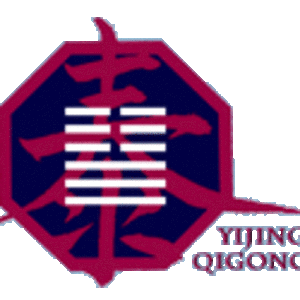
Sign up to save your podcasts
Or




📘📚 Get your FREE E-book on the "Eight verses meditation" by Dr Pang:
https://www.zhineng-qigong-students-hub.com/exploration-of-the-eight-verses-of-zhineng-qigong-meditation-e-book
When autism or neurodiversity becomes disabling, Qigong can offer a path to healing. Regina Dell Oro was told it was impossible to find healing for her son who has autism. Using Qigong, she did three things to create calm within the space of neurodiversity.
Autism naturally comes with diverse ways of thinking, experiencing, and interacting with the world. When those differences are neglected more than they are nurtured, symptoms can escalate, challenges become more immense, and one can become debilitated. With the aim of balancing qi, from being too condensed in the brain, to being regulated in the entire body. Regina, first as a mother and skilled Zhineng Qigong practitioner, set out to find healing for her son and the other young adults who sought the calm.
First, she shifted fundamental thoughts and behaviours of happiness using Dr Pang Ming's "Happy Quarter" technique, thinking "before you practice Zhineng Qigong, you practice happiness". Second, she introduced chanting as a way of communicating. Teaching "Hao La" and "Hunyuan Lingtong" she gave her students a tool to deescalate their fears and anxieties. These magic words related that everything was okay, and more so it gave her students, who often struggled with communication, the ability to recognize when things start to feel out of control. Even with Kai He, the La Qi method, her students could integrate practice into their daily lives, by recognizing and feeling with speech. Third, she carefully introduced movement. As to not initiate seizures, she considerately taught them how to move their neck and spine. With Zhineng Qigong Methods like, Crane’s Neck, Wall Squats they were moving Qi from the brain to the rest of the body.
For Regina it was "always a dance of what can be done, what cannot be done, and where we need to push a little bit". Through it all, she used her skills and understanding to adapt the practice of Qigong and make it more relatable to people with neurodiversity. By breaking down the movements, renaming and reframing, she achieved the impossible. Tune in to hear her story.
Mindful Moments:
Links & Resources:
🎮 Discover Qigong Game: https://www.zhineng-qigong-students-hub.com/discover-qigong/
🎁 Discover the power of Qigong with this easy-to-follow Starter Kit: https://qigong-starter-kit.com/
🎙️🌟Explore more podcasts, events, and resources visit:
https://www.zhineng-qigong-students-hub.com/
Connect on Facebook, Instagram, Youtube
 View all episodes
View all episodes


 By Zhineng Qigong Student's Hub - Torsten Lueddecke
By Zhineng Qigong Student's Hub - Torsten Lueddecke




5
77 ratings

📘📚 Get your FREE E-book on the "Eight verses meditation" by Dr Pang:
https://www.zhineng-qigong-students-hub.com/exploration-of-the-eight-verses-of-zhineng-qigong-meditation-e-book
When autism or neurodiversity becomes disabling, Qigong can offer a path to healing. Regina Dell Oro was told it was impossible to find healing for her son who has autism. Using Qigong, she did three things to create calm within the space of neurodiversity.
Autism naturally comes with diverse ways of thinking, experiencing, and interacting with the world. When those differences are neglected more than they are nurtured, symptoms can escalate, challenges become more immense, and one can become debilitated. With the aim of balancing qi, from being too condensed in the brain, to being regulated in the entire body. Regina, first as a mother and skilled Zhineng Qigong practitioner, set out to find healing for her son and the other young adults who sought the calm.
First, she shifted fundamental thoughts and behaviours of happiness using Dr Pang Ming's "Happy Quarter" technique, thinking "before you practice Zhineng Qigong, you practice happiness". Second, she introduced chanting as a way of communicating. Teaching "Hao La" and "Hunyuan Lingtong" she gave her students a tool to deescalate their fears and anxieties. These magic words related that everything was okay, and more so it gave her students, who often struggled with communication, the ability to recognize when things start to feel out of control. Even with Kai He, the La Qi method, her students could integrate practice into their daily lives, by recognizing and feeling with speech. Third, she carefully introduced movement. As to not initiate seizures, she considerately taught them how to move their neck and spine. With Zhineng Qigong Methods like, Crane’s Neck, Wall Squats they were moving Qi from the brain to the rest of the body.
For Regina it was "always a dance of what can be done, what cannot be done, and where we need to push a little bit". Through it all, she used her skills and understanding to adapt the practice of Qigong and make it more relatable to people with neurodiversity. By breaking down the movements, renaming and reframing, she achieved the impossible. Tune in to hear her story.
Mindful Moments:
Links & Resources:
🎮 Discover Qigong Game: https://www.zhineng-qigong-students-hub.com/discover-qigong/
🎁 Discover the power of Qigong with this easy-to-follow Starter Kit: https://qigong-starter-kit.com/
🎙️🌟Explore more podcasts, events, and resources visit:
https://www.zhineng-qigong-students-hub.com/
Connect on Facebook, Instagram, Youtube

6,815 Listeners

3 Listeners

345 Listeners

257 Listeners

99,265 Listeners

1,464 Listeners

134 Listeners